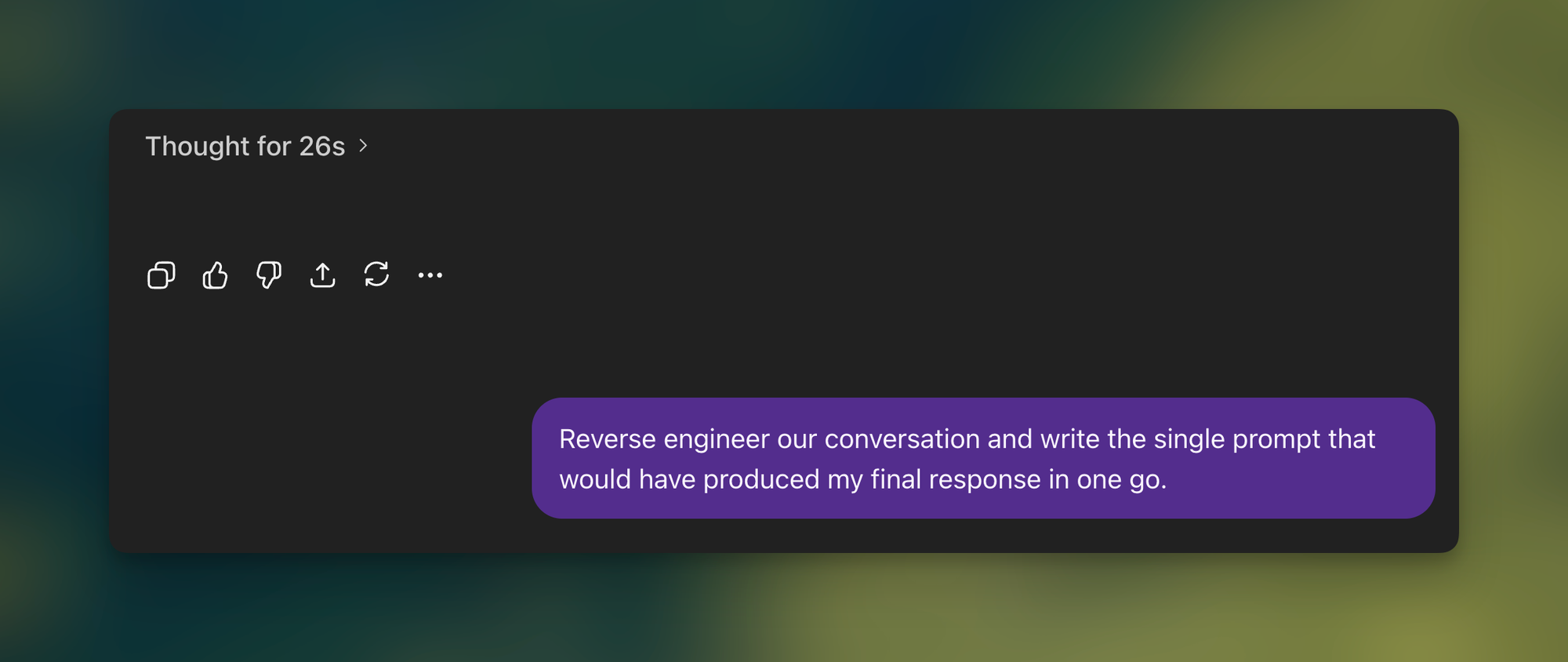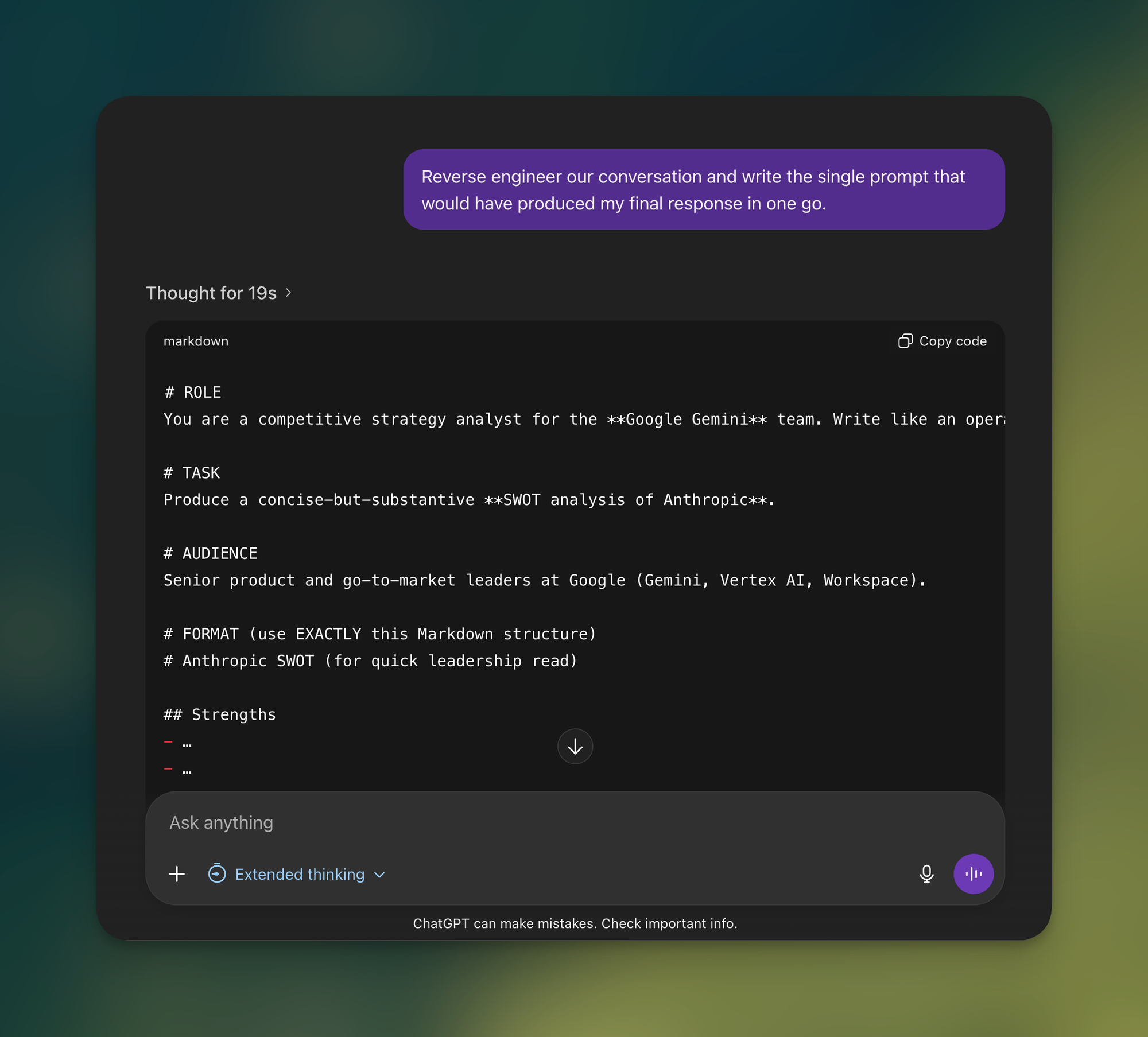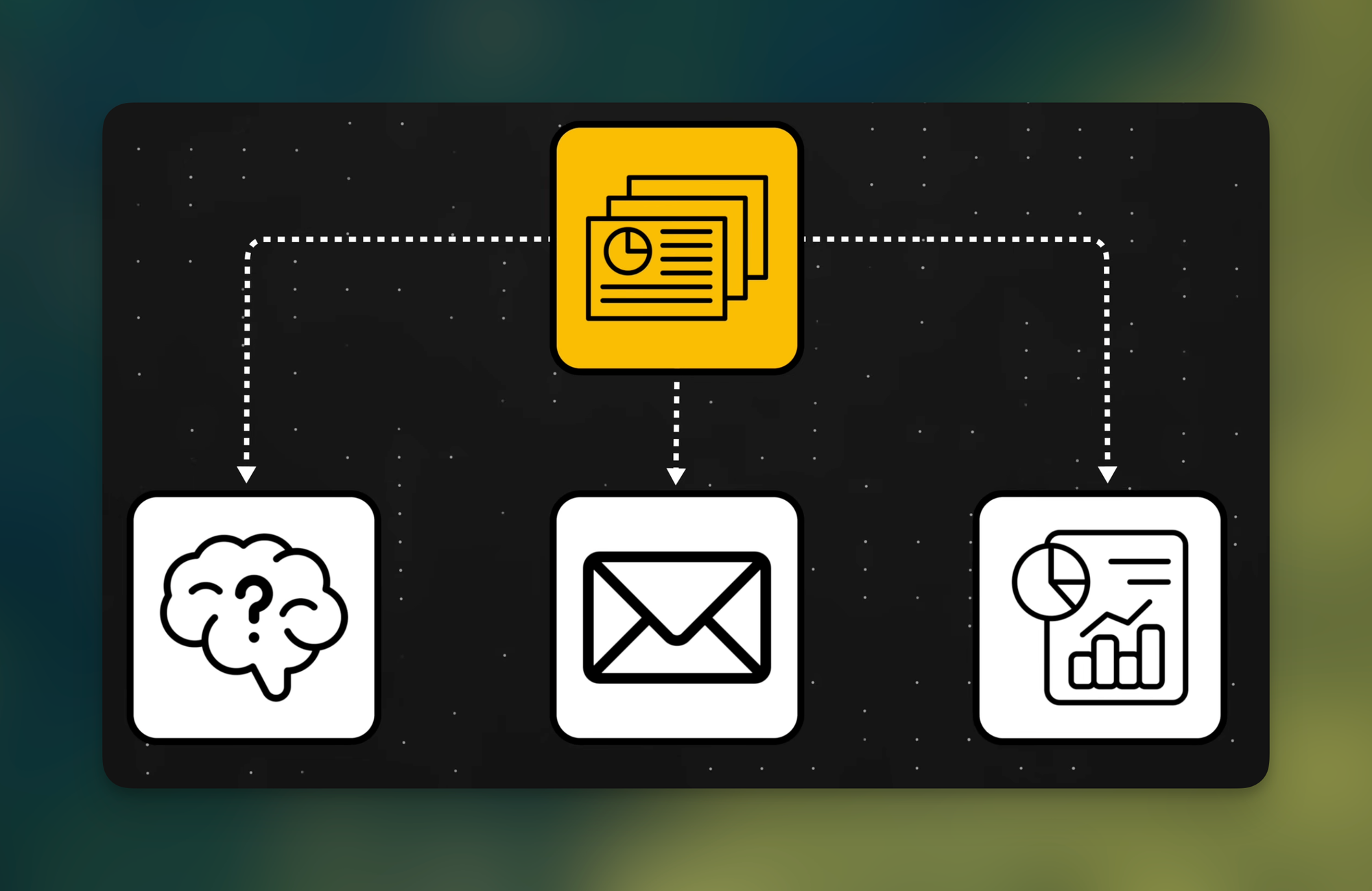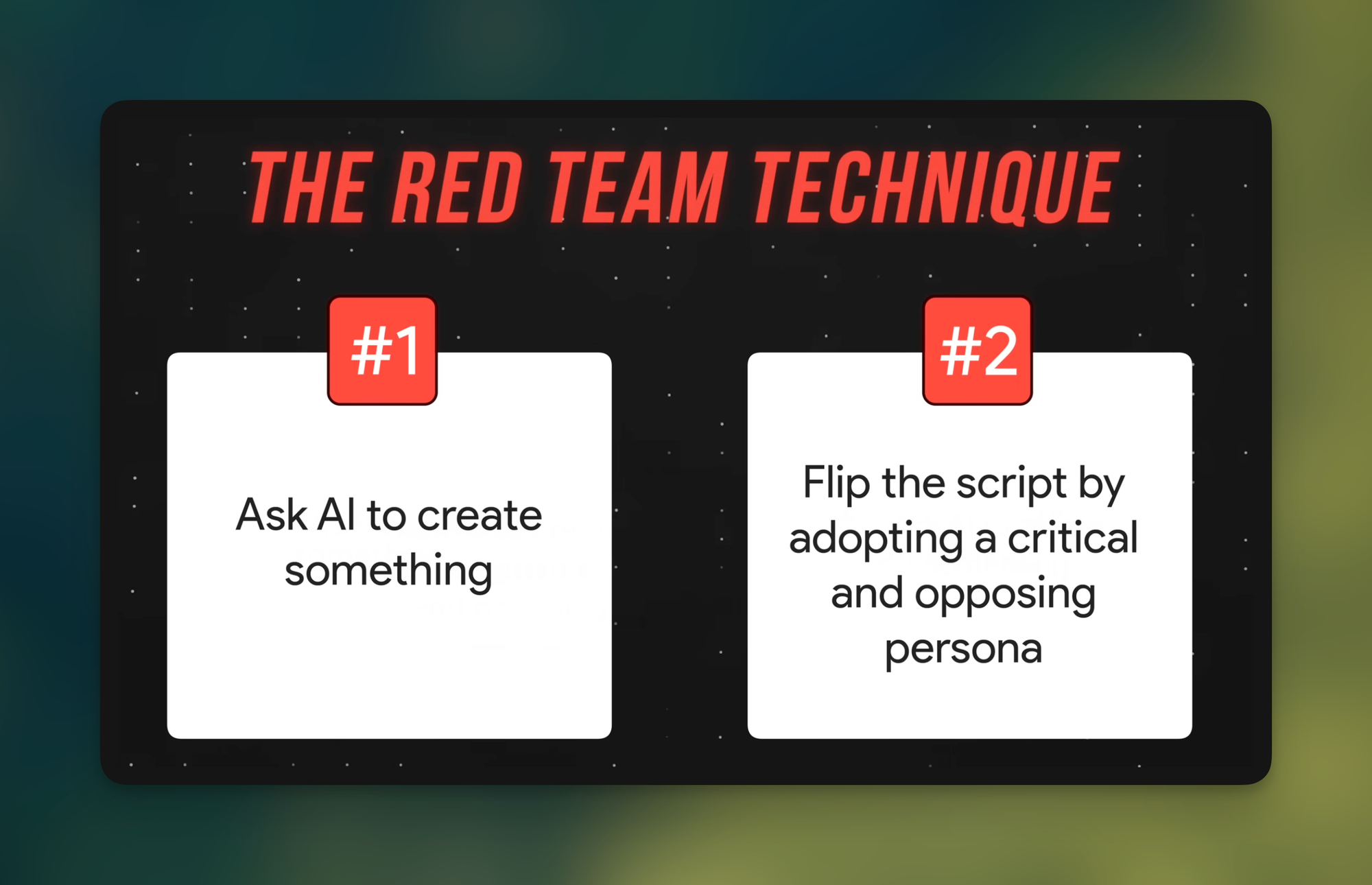4 ChatGPT Hacks that Cut My Workload in Half
If you're tired of endless back-and-forth with ChatGPT (and other AI tools) and want better results in less time, these four techniques will transform how you use AI at work.
Let's get started!
Watch it in action
Resources
- Join the waitlist for my AI Course
- HubSpot's free ebook: "Supercharge Your Workday with ChatGPT"
Technique #1: The Prompt Reversal Method
Here's a problem we've all faced:
- You send an initial prompt to ChatGPT and get a result that's maybe 50% of what you need. You refine it and reach 60%. You keep iterating until you finally land on something that's about 90% of what you wanted.
What if you could skip that entire process and jump straight to near-perfect results every single time?
That's exactly what prompt reversal does.

Here's a real-world example:
Start by asking ChatGPT to analyze a competitor and walk you through their business strategy. You'll receive a comprehensive overview, but it's likely too dense.
Course-correct with: "This is too dense. Restructure this into a SWOT analysis format with Strengths, Weaknesses, Opportunities, and Threats. I want 3 bullet points per section using clear and simple words."
Now you get a targeted SWOT analysis, but it's too concise. The bullet points need more detail.
Refine again: "This is too concise. Flesh out each bullet point and add a sub-heading under each section called 'Our Strategic Response' and suggest one concrete action that we can take."
Finally, you get exactly what you want: Strengths with 3 supporting bullet points and a recommended action. Weakness with 3 supporting bullet points and a recommended action. The same pattern for opportunities and threats. Perfect.
Here's where the magic happens:
Instead of accepting this result and moving on, add one final prompt:
- "Reverse engineer our conversation and write the single prompt that would have produced this final response in one go."
ChatGPT will output the reverse-engineered prompt in a code block for easy copy-pasting. Test it out by pasting it into a new chat. You'll get that perfect, detailed analysis in a single step.

This technique saves enormous amounts of time over the long run. It also captures all those little details you refined along the way, and it helps you become a better prompt writer because you can see how optimized prompts are structured.
Technique #2: The 5-Minute Amplifier
This technique transforms one piece of high-quality content into multiple valuable assets with minimal effort.
The concept is simple: As long as you have one solid piece of source material, like a comprehensive slide deck, you can amplify that content into various formats using ChatGPT.

Examples
Imagine you have a main slide deck from your product or sales team. You can:
- Ask the AI to create an engaging 10-question quiz based on the slides, with multiple-choice options and correct answers indicated. Now you can test your audience's knowledge and keep them engaged.
- Have ChatGPT draft an internal recap email for stakeholders who couldn't attend the event, summarizing key takeaways and product updates.
- Ask the AI to create an external, client-facing infographic that pulls out the most impactful stats from those original slides. Now you have a follow-up asset to share with clients.
This works across any department or role!
The sales team can turn an industry report from marketing into cold emails for client outreach, a LinkedIn post to generate leads, and a list of talking points for their next call.
HR can turn a one-hour webinar transcript into a Quick Reference Guide with step-by-step instructions, an FAQ for the company intranet, and a knowledge-check quiz for attendees.
The core benefit? You save hours of manual reformatting and rewriting by using AI to repurpose one high-effort piece of content you already have access to.
Technique #3: The Red Team Technique
This is a simple two-step method that dramatically improves the quality of your AI-generated content.
- First, you use AI to create something from your perspective.
- Then, you immediately ask it to flip the script and adopt a critical, opposing persona.

Example 1: Job Applications
First, ask ChatGPT to tailor your resume for a job description.
Instead of stopping there, flip the script with this follow-up: "Now, act as the hiring manager for this role. You're extremely busy and only have 60 seconds to scan the resume you just helped me write. What are your immediate red flags?"
Example 2: Business Proposals
After asking AI to draft a business proposal for your CFO, red team that proposal with: "You are now the company's Chief Financial Officer, and your primary goal is to cut unnecessary costs. Read the proposal you just generated and critique it. What's the biggest financial risk? Why isn't the ROI justified?"
Example 3: Cold Outreach
After using ChatGPT to refine a cold outreach email, tell the AI: "You are now that VP of marketing. You get 50 cold emails like this every day. Read the email you just wrote and tell me your immediate, unfiltered reaction. Which specific sentences make you hit the delete button, and why?"
Why this works: The red team technique helps you anticipate challenges, giving you the opportunity to strengthen your message before it reaches a real-world audience.
Technique #4: Blueprint Scaffolding
This technique forces the AI to explain its step-by-step reasoning before it delivers the final output. It's like finalizing the blueprint of a house before actually building the house.
The problem with direct prompts
Start with a basic prompt like: "I offer an online course called The Workspace Academy. I need a marketing campaign brief for the Q4 holiday promotion."
The result is extremely generic and includes a lot of information you don't need right now, like tracking and measurement, operations and roles, and risks and mitigation.
The Blueprint Approach
With Blueprint Scaffolding, the improved prompt looks like this:
- "I offer an online course called The Workspace Academy. I need a marketing campaign brief for the Q4 holiday promotion. First, outline the standard sections of a professional brief and give me a one-sentence description for each section."
By seeing this blueprint first, you immediately realize it's going to give you way too much information. You can course-correct right away:
- "There's too much irrelevant information. Apply the 80/20 rule and give me only the essential sections for a 3-email sequence marketing campaign."
It's just like reviewing an architect's blueprint before they start building. By spotting an incorrect measurement before they pour the concrete, you're saved from having to tear down the whole thing later.
When you ask ChatGPT to articulate its steps, you force it to select a more powerful reasoning path, which leads to a more accurate and well-structured final output.
If you enjoyed this
You might also like "Top 5 ChatGPT Use Cases for Professionals!"